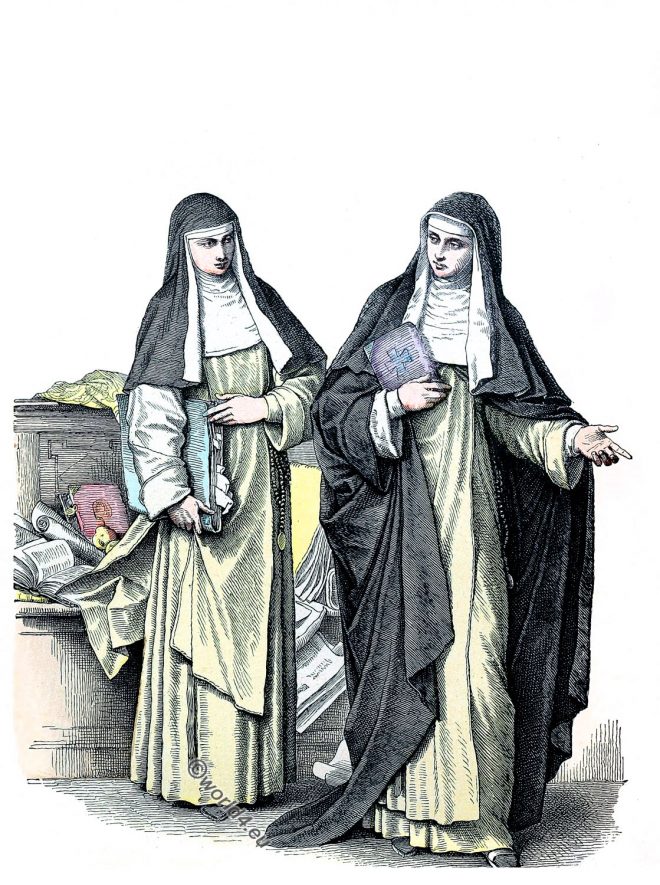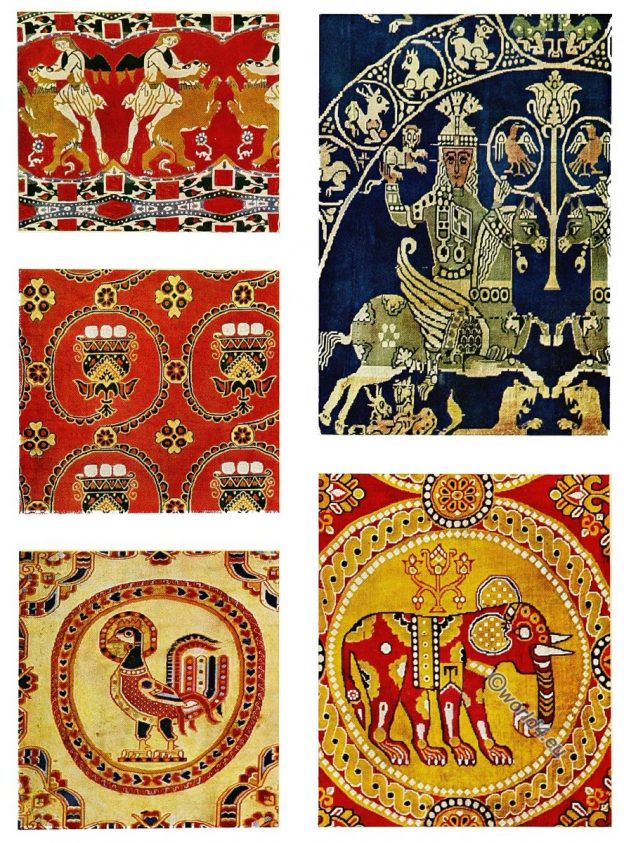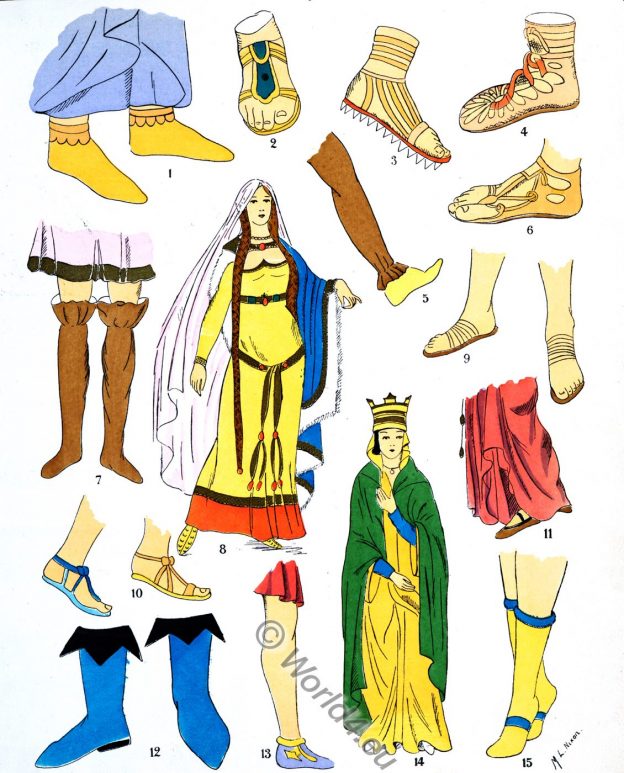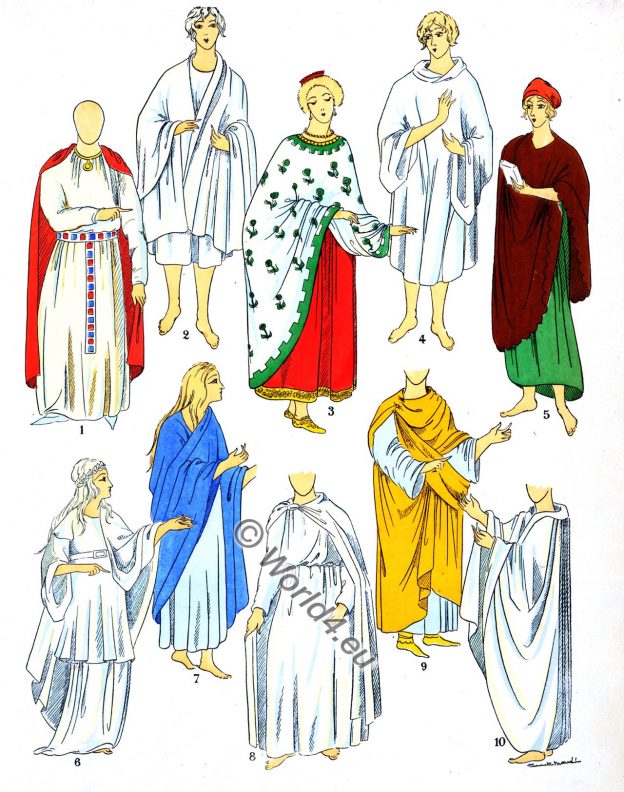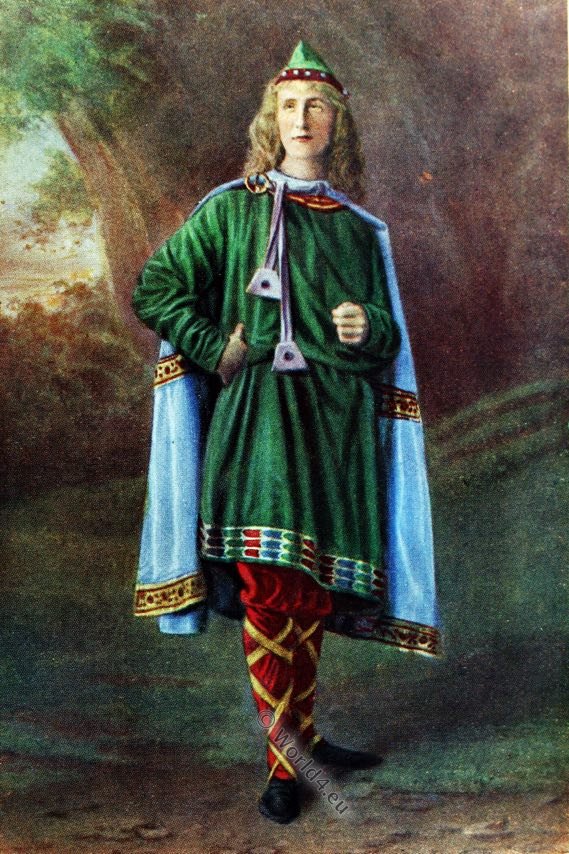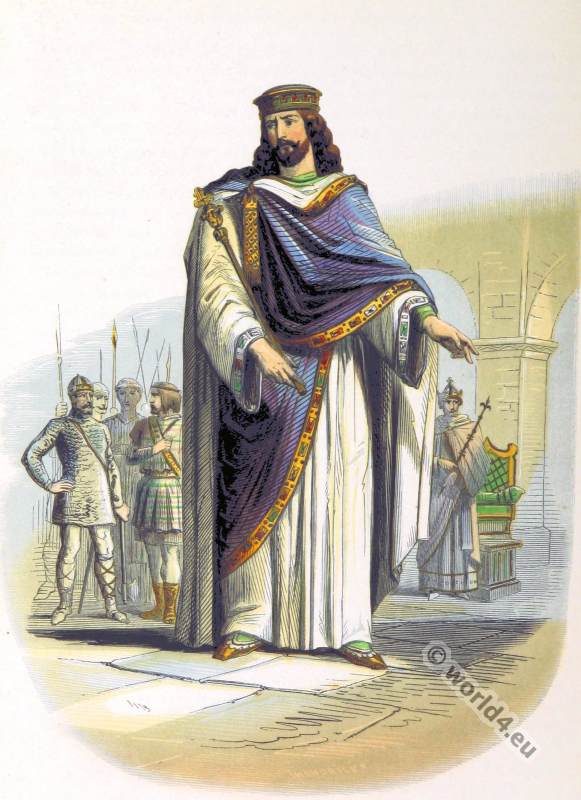Frankish-Byzantine. Vestments of the Byzantine emperors and empresses of the Eastern Roman Empire. Portraits of emperors. Splendor and house costumes. The Heraklian Dynasty. The dynasty of the Isaurians.
Category: 6th Century
Byzantine. The Emperor. Greek, Latin clergy. Ascetics and monks.
Byzantine. Greek, Latin clergy. Ascetics and monks. The blessing of the Greeks and the Latins. The Emperor of the Eastern Roman Empire and the officers of his retinue. The Roman Consul. The patrician. Secular and ecclesiastical instruments.
Types of nuns. Habit of different orders. Ecclesiastical Monastic orders.
Female religious habit at the end of the eighteenth century. Nuns who live according to the Rule of St. Augustine, St. Dominic, St. Benedict and of Saint Angela Merici.
Antique Fabrics from Egypt. Coptic Silks. Silks from Alexandria.
Antique Fabrics. Red silk, patterned with figures of Samson and the Lion. Fabric with elephant pattern. Fabric with cock pattern, Persia.
Ancient Gallic Footwear. Merovingian fashion history
Gallic Footwear. Gaul Plate 9.
The comfortable costumes of the fashionable Gallic women.
Carvings on Gallo-Roman tombs show the fashionable gallic women dressed in the penula, sometimes they have an apron over a very short tunic.
Ancient Gallic cloaks. Merovingian fashion history.
Gallic cloaks. GAUL Plate 4.
The Anglo-Saxon fashion and costume history. England c. 460 to 1066.
The Saxons commenced their conquests during the fifth century, but it was not until the year 720 that the earliest MS. preserved to us saw the light.
The Frankish dominions in Merovingian times (486-768).
The Frankish dominions in Merovingian times (486-768). from the decline of the Roman empire: Asia and of the New world connected with European.
Clovis first king of the Franks. Founder of the Merovingian dynasty.
History of the Frankish kingdom. Dynasty of Clovis founder of the Merovingian dynasty. The Puppet Kings, Charles Martel.



